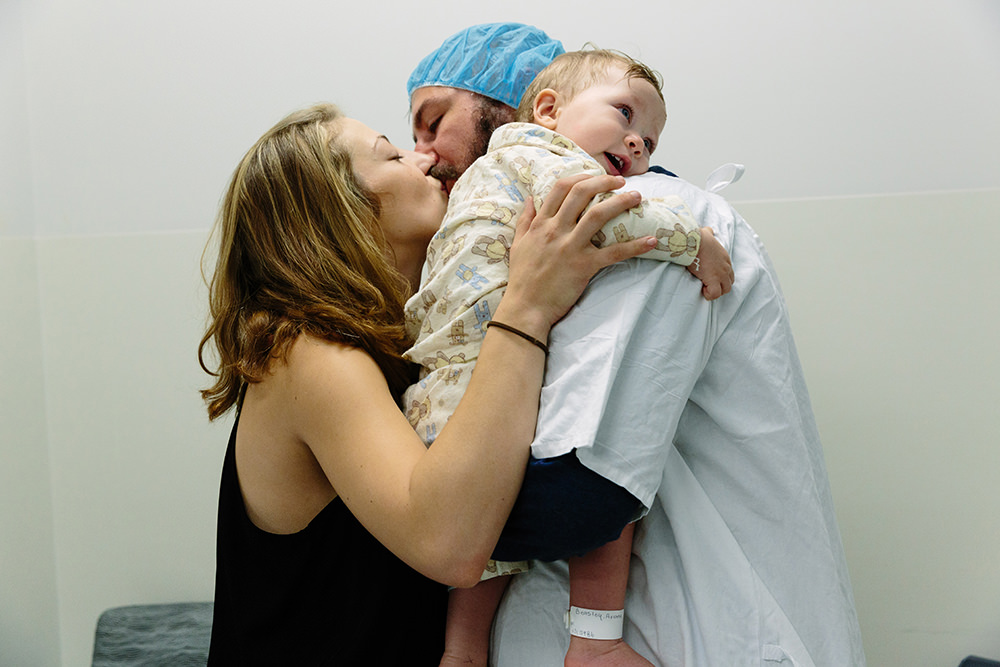Keeping Australia Alive a “patchwork quilt”
Every day across the country people are making life-changing decisions. We talk to executive producer Karen Dewey about Keeping Australia Alive.
 Keeping Australia Alive
Keeping Australia Alive
Becoming a parent, the death of a loved one, lifesaving surgery, a chilling diagnosis – it’s easy to forget how much the healthcare system is entwined with pivotal moments in our lives.
Then you watch something like Keeping Australia Alive.
A powerfully emotive seven-part ABC documentary series, it was crafted from footage taken by more than 100 cameras filming in hospitals and clinics across Australia over one day – Wednesday 28 October 2015.
Executive Producer Karen Dewey
This incongruent date for some was the day when, somewhere in Australia, a woman found out if her IVF treatment had been successful, a husband waited while his wife underwent a double mastectomy for breast cancer, and a man with Parkinson’s disease had an awake craniotomy (brain surgery while conscious).
These are just scratching the surface of what Keeping Australia Alive covers, which in turn is tackling the tip of the iceberg that is our national health system.
“We wanted to cover births, deaths and everything in between,” executive producer Karen Dewey says.
“We knew we wanted to be as far north, south, east and west as we possibly could, and we knew we wanted to be in metropolitan hospitals, rural, regional, and remote hospitals or clinics.”
They also knew they wanted to look at Australia’s top ten killers and challenges unique to Australia such as: the tyranny of distance, the public/private system, the indigenous health gap, an ageing population, an obesity epidemic and low organ transplant donation rates.
It was an enormous task for Dewey and the team, who says it all started with a crucial seven months of pre-production.
“You don’t get second takes,” she says. “So if your pre-production is organised and thorough you’re in a good position.”
Seven ‘hub’ producers were brought in from across the country and assigned health areas to investigate. They found stories and built relationships.
Access to more than 80 hospitals and clinics was then needed, with series producer Elle Gibbons and the ITV legal team working to ensure that was possible.
Then on ‘D-Day’, as Dewey calls it, more than 130 producers, camera operators and sound recordists flew out to points across the country, from the Torres Straits, to Ballarat to Tasmania. Some worked in teams of two, while others, such as the producer filming an indigenous kidney dialysis clinic in Kintore (five hours drive from Alice Springs), were on their own.
“At midnight on the day of shoot, we expected that we would celebrate, but in fact we celebrated really cautiously because although the producers were telling us that they had got the stories, we had seven episodes in the can but we hadn’t seen a frame of footage,” Dewey says.
“We were cautious until that footage started rolling in over the next couple of days.”
And roll in it did. All 550-600 hours’ worth of rushes.
They came in different formats, filmed on different cameras. Some footage came from the stark remote Australia, compared to the heavy city material, which each had completely different colour palettes.
“The editing process, I keep describing it as a patchwork quilt,” Dewey says.
“This could have gone together well in a number of ways. We worked with a bit of four headed monster – the supervising producer, the series producer, head of post and me.”
Together they worked with four episodic editors to bring that vision together and find the right balance of emotion and diversity.
There were often tears. Not out of frustration, but the power of these stories, which often had Dewey and her colleagues reaching for the tissue box.
“There’s a story I think in every episode that resonates with people,” Dewey says, adding they have already been overwhelmed by the response from the first episode.
The series has not only reminded people they are not alone, but may help further.
“There’s been huge support from all the doctors involved who really want to get these messages out there,” Dewey says, whether it’s about early dementia diagnosis, or the obesity epidemic.
And the passion comes from the patients themselves too.
In Episode Three, Annie, a woman in Perth, allows camera to film with her as she undergoes a double mastectomy from breast cancer.
“They felt it was really important for people to know that Annie had only found her cancer because she had been vigilant and it was detected early,” Dewey says.
“We were very aware that this story is not just through the eyes of Annie, who’s having that terrible operation and is full of fear and grief. It’s also a story told through Annie’s husband Gerry, who has to put on a brave face, support her, and sit outside the surgery and wait, and be there for her.
“It’s one of those things where they were so generous to allow us to film that.”
BREAKING KEEPING AUSTRALIA ALIVE DOWN IN NUMBERS
1 day of production
2 separate awake craniotomies filmed also called Deep Brain Stimulation, it was so they would not miss the story if the surgery didn’t go ahead for some reason
4 months of post-production
7 months of pre-production
7 episodes
10 different emergency wards had units in them
27 hours from the beginning of filming to the end
the Perth time-zone difference meant an additional three hours on the 24-hour day
130 producers, camera operations and sound recordists
550 hours of rushes
1000+ consent forms

What to read next
Three years ago, Taryn Brumfitt could never have thought she'd be a filmmaker, but when her personal story went viral, she realised Embrace was needed.
10 Aug 2016
Caris Bizzaca